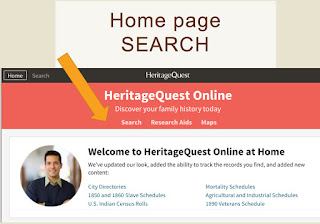 |
| Bryna O'Sullivan - NERGC 2019 Speaker |
Now Bryna is presenting two programs at the New England Regional Genealogical Consortium (NERGC) conference in New Hampshire, April 3-6, 2019. She's a member of the Association of Professional Genealogists, and she applies her academic background in history, church history, and French to the genealogy projects she undertakes. Please visit her website, Charter Oak Genealogy, to learn more.
In my role as an official NERGC blogger, I asked Bryna a few questions about how she got started in family history, who's in her family tree, and making the most of the NERGC experience.
1. What kindled your early interest in genealogy, and why did you decide to become a professional genealogist?
Surprisingly enough, my interest didn’t start with the traditional “family tree” project. My elementary school had (and still has) a unit on the Mayflower as a way to introduce students to American history. Seeing how intrigued I was by the unit, my great-grandmother shared that we were descended from one of the Mayflower’s passengers and a little bit about our family’s history. I wanted to know more about the stories. It was enough to get me started. Although I researched inconsistently through school, the early love has stayed with me and only grown over time. As an aside, I was actually able to go full circle and conduct a genealogy workshop at the school several weeks ago.
Becoming a professional genealogist was a way for me to tie together my love of those stories, my love of the French language and a desire to make a difference. Every day, I’m lucky enough to help my clients access their past. Sometimes, it’s through translating historic documents. Other times, it’s through preparing a lineage society application. But in each case, I’m able to give them a deeper sense of where they came from and what that can mean for their lives.
2. One of the programs you're presenting is about proving service for a New England patriot. Do you have a patriot in your family tree?
I actually have “patriots” – defined by the Daughters of the American Revolution as “one who provided service or direct assistance in achieving America’s independence” - on multiple lines of my family tree. My “patriot” ancestors include one of the surveyors of Connecticut’s Western Reserve, a Maryland plantation owner, a militia officer in Quebec and several others. While I’ve not yet proved all of them to DAR standards, I’ve loved to chance to delve into their history and learn more about their lives.
3. What have you learned about genealogy research that you wish you had known when you first started out?
Although there’s very little I wish I had known in advance, as learning is part of the process, there’s one thing that my family did right for which I’m very grateful. My family has always told stories and tied them into our current experiences. Most were positive. When I was studying the Connecticut River, my great-grandmother told me about the ancestor who was a riverboat captain. My mother shared stories about pranks her father played as a child.
However, many stories were not. My grandmother spoke about the French officer who saved my grandfather’s life in the Second World War. Another relative mentioned how an ancestor had died at the Battle of Petersburg. These stories gave incredible gifts: they provided the details I needed to research my family further, but more importantly, a sense of where we had come from, that we had survived tough things, and that we could keep going. Too many families don’t share these stories on the belief that they don’t matter. They do.
4. If you could visit with one ancestor in your family tree, who would you choose, and why?
I was lucky enough to grow up with her! My great-grandmother, who started my interest in family history, joined the US Navy during World War I. As a yeoman (F), she was one of the first women to enlist in the United States military. I attended several events that honored veterans with her when I was a child. How she handled the reaction from World War II vets who assumed she was lying about her service provided a powerful lesson about public perception and standing up for yourself. It was far from her only lesson.
5. What is your game plan for getting the most out of your NERGC experience?
For me, one of the joys of NERGC is learning more about what genealogists are interested in discovering. I’ve carefully blocked out time to work in the Ancestor Roadshow to get a little more one on one discussion.
---
Bryna O'Sullivan is presenting two programs at NERGC, both on Friday:
Session F-135, Tips & Tricks for French Language Documents (1:45-2:45 pm)
Session F-134, Prove New Service for a New England Patriot (4:45-5:45 pm)



























